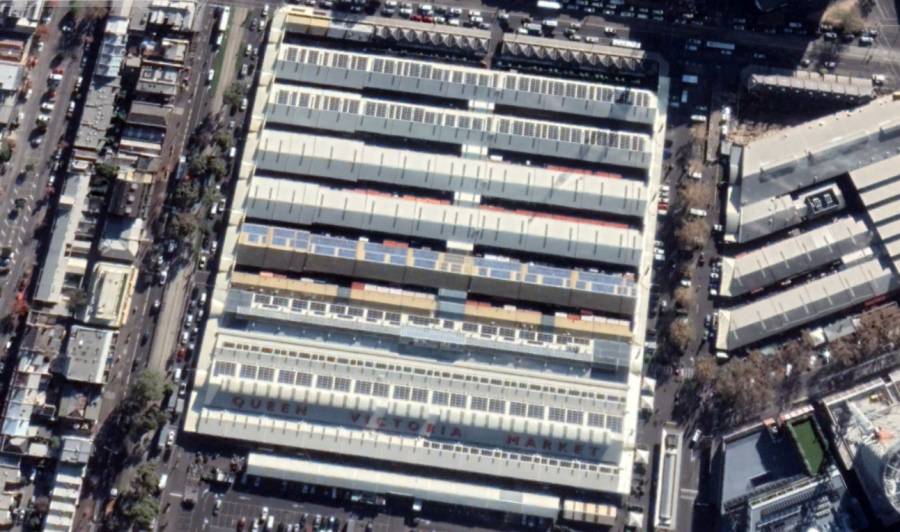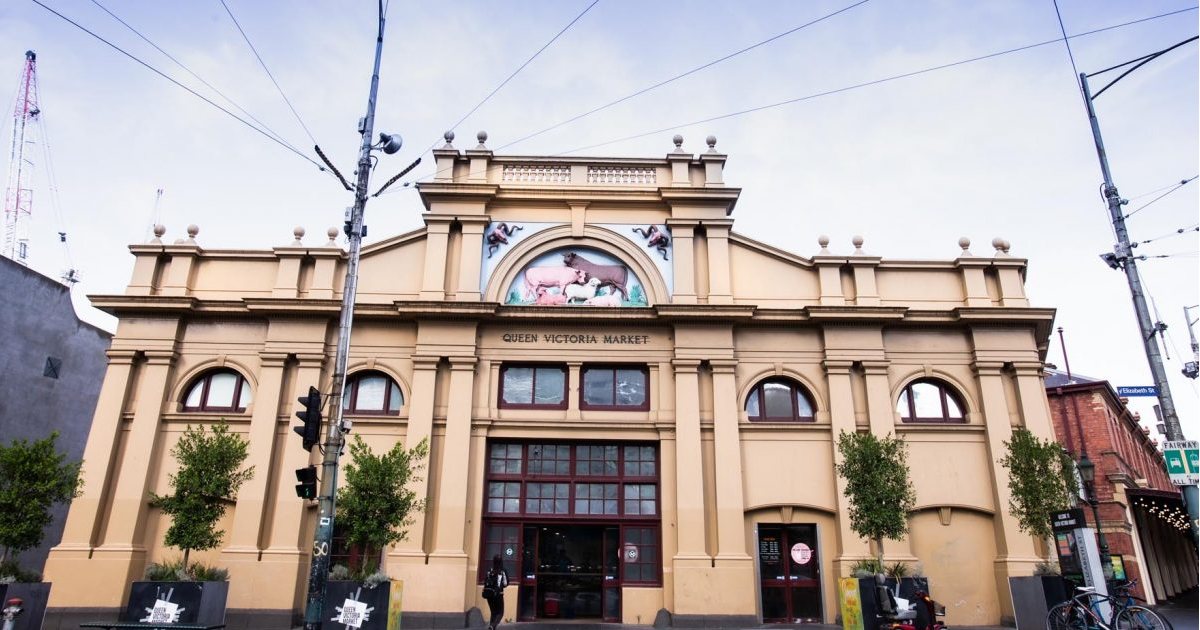The huge rooftop of Melbourne’s Queen Victoria Market is again being put to good use – harvesting more solar energy and slashing the popular venue’s emissions and electricity bills.
The City of Melbourne announced yesterday it has powered up more than 650 solar panels, with another 900 to be operational in the coming months.

The market’s rooftop in May this year. Note: some of the panels are from an installation *20 years* ago (see below). | Image: Google Earth.
While total capacity of the new system wasn’t mentioned, at a rough guesstimate it would be around 620kW if 400 Watt solar panels have been used. This would gel with the City’s forecast that the solar power system will generate more than 900,000 kilowatt-hours a year.
It’s expected the installation will slash the market’s electricity costs by $100,000 a year. There will also be significant emissions reduction benefits.
“The installation of more than 1,500 solar panels at the Queen Victoria Market will save 1,300 tonnes of carbon emissions each year, building resilience to the changing climate in one of our fastest growing city precincts,” said Environment portfolio lead Councillor Rohan Leppert.
The new PV project is part of the $268 million Queen Victoria Market Precinct Renewal program.
“We’re doing everything we can to reduce our environmental impact and build resilience to ensure Melbourne is one of the world’s most sustainable cities,” said Lord Mayor Sally Capp. ” Our major investment in the Queen Victoria Market precinct will play a significant role as we build towards becoming a zero-carbon city by 2040.”
The Market’s Amazing Solar Power History
Queen Victoria Market doesn’t just occupy an important spot in Melbourne’s history for the heritage-listed building itself and the activities that have occurred under its roof(s) – it also has a very interesting solar energy history.
In the image above, the blue-ish panels are what remains of an installation that occurred way back in *2003* that involved 1,328 modules along with 83 solar inverters.
The panels used for the original installation were manufactured by BP Solar1 and the inverters may have been SMA. Total capacity of the old system was 200kW, making the panels a measly 150W each. Still, it was *huge* rooftop installation for the time, and the largest of its type in the Southern Hemisphere at that point.
Looking back at historical imagery, it appears most of the original panels were still in place up until 2020/21 when major renovation to a couple of the pavilions was carried out; one of which hosted a bunch of modules.
Those old panels would make great collector’s items and hopefully at least a few will be or have already been kept for historical purposes. On a related note, it’s about time Australia had a significant dedicated museum showcasing our renewable energy history given the long and important role this country has played in the renewables sector.
Trivia: According to GreenLivingPedia, the original 200kW system generated 239,000 kilowatt-hours of electricity during the 2003-2004 financial year. For another related blast from the past, check out the related press release from the Victorian Government of the time announcing the system’s commissioning.
Footnotes
- BP Solar had panel manufacturing facilities in Sydney’s Homebush Bay. The factory was closed in 2008. ↩


 RSS - Posts
RSS - Posts



Speak Your Mind